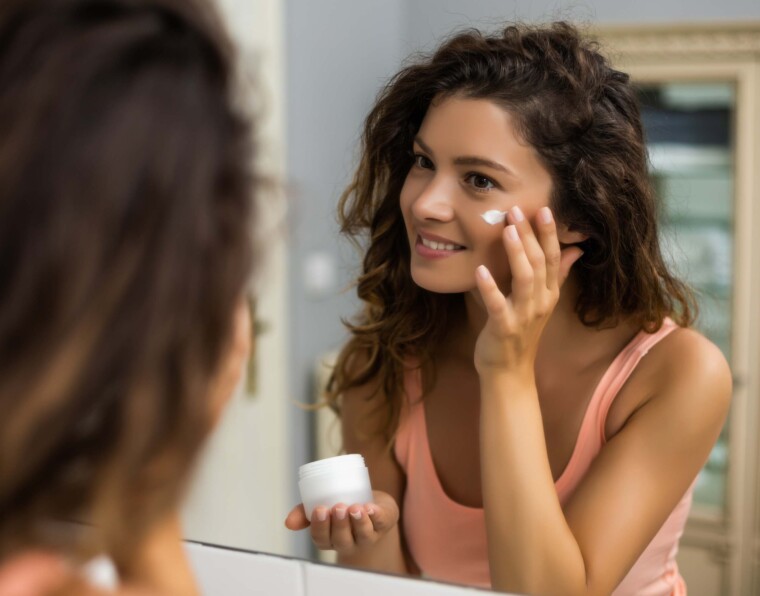Sunburns and all of its accompanying symptoms are not only unpleasant but also harmful. Accidents can happen, despite the fact that the majority of us are aware that being burnt increases our chance of developing skin cancer and should be avoided. In certain cases, the harm that results has unanticipated adverse consequences. In this article, we’ll discuss why does skin peel after sunburn, as well as possible remedies.
Why does getting a sunburn cause my skin to peel?
The most typical sign of sunburn-related damage to the top layer of your skin (epidermis) is dry, peeling skin.
Peeling skin occasionally indicates an immune system problem or another illness. Before attempting home remedies, consult your healthcare provider if your peeling skin isn’t the result of a sunburn.
There are steps you can take to prevent the sunburn-related peeling from getting worse if it has already begun. Please resist the urge to pull off your flaking skin. Instead, let it naturally slough off of your body.
Here are some remedies and advice on how to stop peeling once it has begun.
How Does Sunburn Affect the Skin?
A sunburn is a particular sort of burn that is mostly brought on by the sun’s ultraviolet B rays. After a body’s defenses are weakened by an excessive amount of exposure to this UV radiation, it happens. A sunburn is the harmful response that takes place.
The severity of a sunburn relies on your skin type (those with lighter skin are more susceptible) and the quantity of UV radiation you’ve been exposed to. First-degree sunburns only damage the epidermis, the skin’s outermost layer, and may be red and uncomfortable to the touch. Burns of this magnitude ought to recover within a few days.
More dangerous is a sunburn of the second degree. These sunburns include blistering, swelling, and a significant redness of the skin. This indicates that nerve endings and the dermis, a layer of skin deeper, have been harmed. In addition to being more painful, this kind of sunburn will take longer to cure than a first-degree burn.
Sadly, both of these burns have a tendency to peel. What then can you do to stop this?
A Burn’s Turning Point
The body is attempting to get rid of damaged cells as the skin starts to peel. Many of the same methods that work for a sunburn that isn’t peeling may be used to provide relief. The first step in curing sunburned skin is to get out of the sun and cure a sunburn as soon as you see it. You may take ibuprofen or aspirin to reduce discomfort, as well as take cold baths or showers. Additionally, moisturizing the region with an aloe-vera- or soy-based lotion is the best course of action. Sunburned skin will benefit from moisturizing, but be cautious to steer clear of petroleum- or other oil-based treatments. These could retain heat and exacerbate your sunburn. Don’t forget to drink more water as well to avoid being dehydrated.
Continue moisturizing your skin once the skin begins to peel, she advises, since this may hasten the healing process. As peeling skin heals, be especially careful to cover and preserve it.
What is the duration of peeling?
In most cases, three days after getting burned, your skin will begin to peel. Peeling typically stops after the burn has healed, which for milder burns takes around seven days.
It’s crucial to keep an eye out for symptoms of a severe burn, such as:
a fever or chills, large areas of your body, such as your back, blistering or peeling, and dizziness or confusion
Such severe sunburns demand medical attention.
The Best 5 Sunscreens for Your Skin
1) Coola Dew Good Illuminating Serum Probiotic Sunscreen
With Coola’s Dew Good Illuminating Serum Probiotic Sunscreen, your skin will appear so moisturized and glowing that you won’t even need foundation. Dewy is the word of the game. Thanks to a trio of chemical filters that protect your skin, this SPF 30 applies thin and weightlessly.
2) SkinMedica Total Defense + Repair Broad Spectrum SPF 34
Although paying $68 for sunscreen may seem excessive, it’s one of our top picks. Vitamins C and E, two potent antioxidants found in many of our favorite products, are abundant in SkinMedica Total Defense + Repair SPF 34, which protects skin against UVA, UVB, and infrared-A radiation. Squalane, glycerin, and niacinamide are additional skin-nourishing ingredients that help to reinforce the barrier and increase brightness.
3) MDSolarSciences Gleam + Glow SPF 50
For those searching for a makeup-skin-care mix, MDSolarSciences Gleam + Shine SPF 50 offers a slight glow. This faintly tinted sunscreen contains three chemical UV filters (avobenzone, octocrylene, and octisalate), five ceramides, and allantoin to soothe the skin, while niacinamide controls excessive oil production.
4) Sun Bum Glow 30 Moisturizing Sunscreen Face Lotion SPF 30
The one and only tinted sunscreen exception is Sun Bum’s Glow 30 Moisturizing Sunscreen Face Lotion SPF 30. This Glow 30 Moisturizing Sunscreen Face Lotion goes on very smoothly, making it a necessity for your beach bag. To intensify the dewy effect, this formula is also spiked with hydrating glycerin and antioxidant-rich kakadu plum.
5) EltaMD UV Clear Broad-Spectrum SPF 46
EltaMD UV Clear Broad-Spectrum SPF 46 has probably been mentioned a few times if you’re an avid reader of allure.com throughout the years. Numerous board-certified dermatologists have praised this non-greasy, lightweight solution for its pore-unclogging (through lactic acid), shine-reducing, and of course, UV protection characteristics.
You’ll be happy to hear that this mattifying moisturizer with SPF is spiked with just the proper amount of quickly absorbing sodium hyaluronate since all skin types, especially oily skin types, benefit from hydration (a form of hyaluronic acid).




